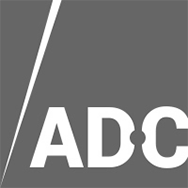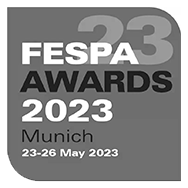
Sustainable wide format print has shifted from a trendy term to a core principle guiding the industry. Every aspect of the printing process is experiencing significant change, from sourcing sustainable materials to adopting advanced, eco-conscious, technologies. At Imageco, we lead this sustainability movement, promoting inventive methods and envisioning a greener future for printing. In this blog, we’ve highlighted the environmental impact of wide format print and outlined areas where our industry can enhance its sustainability efforts.
Like most industries, the wide format print sector produces a lot of waste. All discarded graphics represent wasted resources, often ending up in landfills. But, if we recycled materials they can be used time and time again, promoting a circular economy and preserving the earths precious resources. As globally, 90% of all products are made from virgin materials and only 7.2% is recycled (this figure has been sadly declining year on year), improving recycling is clearly a key strategy in readdressing this imbalance. By minimising waste and embracing a circular economy, wide-format print can really flourish in a sustainable future.
For printer cartridges, recycling is less straightforward, as some are considered hazardous waste. However, most manufacturers already accept returns of empty cartridges. But if not, there are still some great recycling options which not only help the environment but local people too.
At Imageco, we operate using a recycling policy for acrylic, dibond and all paper and cardboard products. Everything is taken independently of regular waste, which is handled by our waste management facility, Reconomy, who have a strict no-landfill policy.
To add to this, Imageco gained the FESPA UK Waste accreditation which signifies that all of our waste is managed in the most responsible way. The FESPA accreditation is strictly regulated and is an industry-recognised independent accreditation that highlights our sustainability efforts. As our Managing Director, Nathan is now Vice President on the FESPA board, he has been supporting to further develop this accreditation, not only for us but for the wider industry as well.
The importance of using sustainable products in the print industry cannot be overstated. Unsustainable materials can contribute to deforestation and pollute during production and disposal. Sustainable alternatives, on the other hand, utilise recyclable materials, minimize various environmental impacts such as energy and water usage, or even biodegradable options, significantly reducing the industry’s environmental footprint. By choosing eco-conscious materials, we can help conserve resources, protect ecosystems, and minimise waste.
At Imageco, we like to work with Antalis UK, who provide us with Xanita fibreboard. Xanita is an engineered fibreboard manufactured from fibres recovered from recycled used cardboard boxes. Xanita board’s strength means it can be used to construct anything from entire exhibitions stands to usable furniture.
There are a multitude of options available within our sustainable portfolio, get in touch to discover the full range.
Investing in sustainable wide-format print technologies translates to real environmental benefits. These technologies operate on the principle of doing more with less. Compared to older printers, they consume fewer resources, produce less waste, and emit fewer pollutants. At Imageco, we have a great arsenal of sustainable printers, here’s a few of our favourites:
HP Latex offers high-quality prints with minimal carbon footprint. It addresses various health and environmental concerns, complementing top-of-the-line print machinery. With the HP Latex 800W printer, we achieved 50% higher productivity levels compared to previous models, thanks to the advanced printheads.
These enhance colour accuracy and repeatability, optimising processes and promoting eco-awareness by reducing waste and reprints.
There’s a reason Nyala 4 Flatbed printer is known as Europe’s top flatbed printer! It has some amazing sustainability credentials. Its UV LED system uses less electricity than traditional printers. And, with a maximum resolution of 1350 dpi and output of up to 206m2/h, it produces artwork faster while using less energy.
We can’t talk about printers without talking about the inks!
Solvent-based inks release harmful VOCs into the atmosphere during the printing process, contributing to air pollution. Also, these emissions contribute to the accumulation of greenhouse gases, posing a serious risk to the environment.
At Imageco, we work with a lot of HP’s products because they’ve done a really good job in developing more sustainable printers and inks. We like to use HP Latex Inks which are water-based. This means it contains no hazardous air pollutants (HAPs), as is the case with solvent-based inks, and as such requires no hazard-warning labels. Even better, it produces odourless prints that are easy to work with, even in indoor spaces, without special ventilation. Disposal of these inks maximizes sustainability, whilst their cartridges, printheads, and maintenance supplies offer recycling routes.
It’s crucial to check both our operations and the buildings we use for environmental sustainability. At Imageco, we’ve taken steps to cut energy use. We put in solar panels and a voltage optimiser. To top of the sustainability of our HQ, we added electric charging points to support greener transportation, which is vital for our business, given our nationwide installation service.
We’ve made some big steps to reduce our carbon footprint. Our recent carbon report, handled by CarbonQuota, analysed our emissions from January 2020 to December 2022. In this time, we managed to reduce our CO2e emissions by 4 tonnes!
Our absolute carbon reduction savings are equivalent to:
We’re also proudly an ISO14001-certified business!
Embracing these changes isn’t just about meeting demands, it’s about ensuring the industry’s future. By prioritising sustainable practices, wide format print can not only minimise its environmental impact but also thrive in a world where sustainability is no longer an option, but a necessity.
If you want to have a chat about all things sustainability and print, get in touch with our team.



